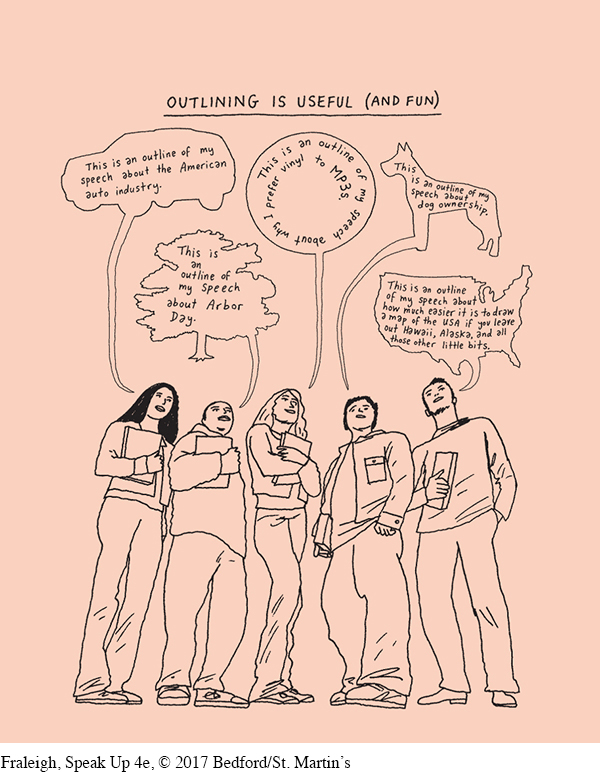Chapter 11 OUTLINING YOUR SPEECH
Page 305
Look for the  and
and  throughout the chapter for adaptive quizzing and online video activities.
throughout the chapter for adaptive quizzing and online video activities.
“A good outline strengthens organization and preparation.”
Veenu, the mother of two young children, was active in her kids’ education and had been elected to the School Site Council twice. She was pleased with the teachers and classes at her children’s school, but at the end of the school year, a problem loomed. Her first-grader was assigned to a new combination second- and third-grade class for September. She did not think that her daughter would thrive when mixed in with older students. Other parents also were concerned about the combination class.
Administrators scheduled several School Site Council meetings to discuss combination classes. Most parents at these meetings spoke ineffectively, expressing their outrage, complaining that their own child was mistreated, but presenting few useful ideas that could help the council make improvements. It was a relief when their speaking time was up. Veenu did not want to be one of those parents and was determined to make a difference.
Veenu talked to teachers and parents involved with combination classes at other schools in her city. Based on these conversations, she decided to focus on three main points—the problems students experienced in combination classes, the challenges teachers faced in these classes, and ideas for how her school could provide support for the students and teachers who were assigned to these classes. She wrote down these three main points and under each one listed the ideas she could use to support that point. Then she practiced her speech to become familiar with the material and make it fit into the available time. After she knew her speech well, she wrote brief notes on her tablet that she could refer to if needed.
Page 306
Veenu’s speech was a success. She knew the material well and was able to look at audience members while speaking. She expressed her main ideas clearly, and the School Site Council adopted several of her suggestions for the combination class.
Veenu’s use of outlining—organizing the content of her speech into a structured form—played a big role in her success. Outlines can help you plan and organize a successful speech, too. They can help you lay out the sequence and hierarchy of your ideas so that you can see if your speech flows logically and covers the subject matter adequately. You also can use an outline to practice your delivery and then present your speech with confidence and flair. In most speech situations, an outline can help you further polish your skills. Even seasoned presenters find outlining highly useful!
The key function of all outlines is to show the hierarchy of the ideas in your speech—your main points and the material that supports each main point. By using alphanumeric headings (beginning with roman numerals for main points and moving through capital letters, arabic numerals, and so on) and indentation, you can present all of your points and show how your points are supported by evidence. This system makes outlines different from manuscripts and essays, which are organized paragraph by paragraph. In this chapter, we discuss the creation of two types of outlining—a working outline and a speaking outline.

 and
and  throughout the chapter for adaptive quizzing and online video activities.
throughout the chapter for adaptive quizzing and online video activities.